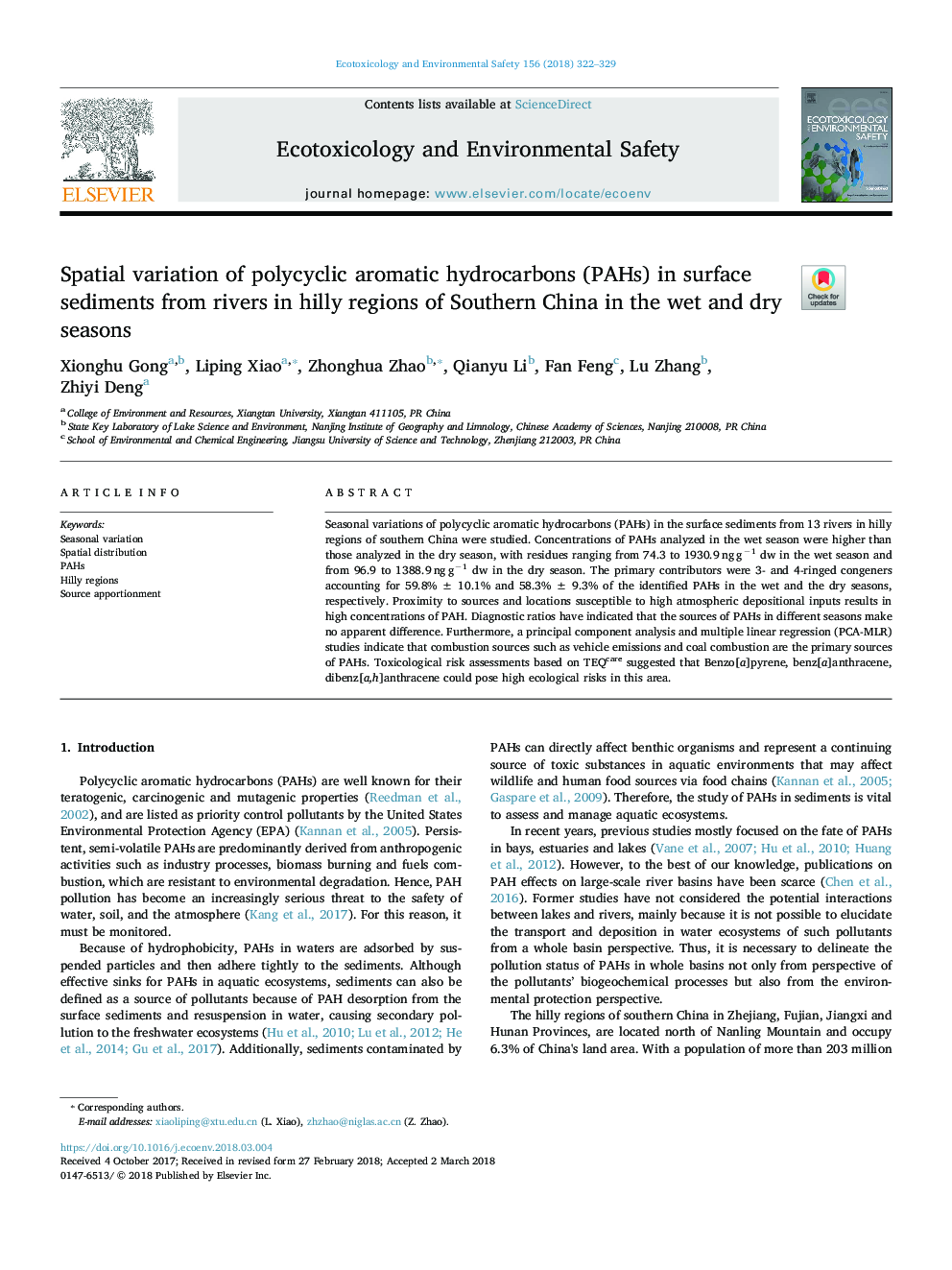| Article ID | Journal | Published Year | Pages | File Type |
|---|---|---|---|---|
| 8854157 | Ecotoxicology and Environmental Safety | 2018 | 8 Pages |
Abstract
Seasonal variations of polycyclic aromatic hydrocarbons (PAHs) in the surface sediments from 13 rivers in hilly regions of southern China were studied. Concentrations of PAHs analyzed in the wet season were higher than those analyzed in the dry season, with residues ranging from 74.3 to 1930.9â¯ngâ¯gâ1 dw in the wet season and from 96.9 to 1388.9â¯ngâ¯gâ1 dw in the dry season. The primary contributors were 3- and 4-ringed congeners accounting for 59.8%â¯Â±â¯10.1% and 58.3%â¯Â±â¯9.3% of the identified PAHs in the wet and the dry seasons, respectively. Proximity to sources and locations susceptible to high atmospheric depositional inputs results in high concentrations of PAH. Diagnostic ratios have indicated that the sources of PAHs in different seasons make no apparent difference. Furthermore, a principal component analysis and multiple linear regression (PCA-MLR) studies indicate that combustion sources such as vehicle emissions and coal combustion are the primary sources of PAHs. Toxicological risk assessments based on TEQcare suggested that Benzo[a]pyrene, benz[a]anthracene, dibenz[a,h]anthracene could pose high ecological risks in this area.
Related Topics
Life Sciences
Environmental Science
Environmental Chemistry
Authors
Xionghu Gong, Liping Xiao, Zhonghua Zhao, Qianyu Li, Fan Feng, Lu Zhang, Zhiyi Deng,
